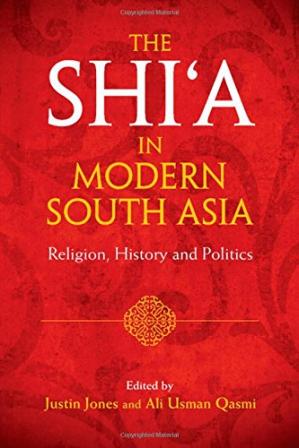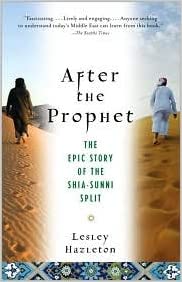
Editorial Note:
Shia Muslims in Pakistan face unrelenting discrimination, including from right-wing sectarians as well as people that identify themselves as liberal, communist, socialist, or progressive. In the first 10 days of Muharram, we have observed an increase in hate speech and mockery directed not just against Shia Muslims but also at Sunni Muslims who share some customs, rites, and rituals with Shia Muslims in Pakistan. Even those who do not practice any religion but regard Muharram as a component of the subcontinent’s composite culture or who represent Imam Hussain (A.S) as a universal symbol of freedom and his death as a symbol of resistance to oppression. The following text was written by two people: Amir Hussaini and Maulabhai. Both examine the nature of the said mocking and ridiculing, while viewing the three dimensions of the culture of Muharram.
Hussaini, who was raised in a Sufi Sunni family, has studied the early Islamic communities in great detail. He has authored six books, one of which, Kufa: From a military cantonment to a center of socio-political movements, earned considerable fame. In that book, he demolished the metanarrative that the Kufan are promise-breakers. He now describes himself as a Marxist. Moulabhai belongs to a Khuja Azna Ashri family and usually he writes of cosmology of the religion.
There are three key-ways of viewing the ‘Event of Karbala’.
One of the three important factors is that the majority of the Muslim population worldwide considers the first ten days of Muharram to be extremely holy days. These days are a time for remembering the Karbala martyrs for the vast majority of Muslims.
Sunni Muslims who belong to the Deobandi and Ahle Hadees subsects hold special religious assemblies in their mosques and seminaries to explain the reasons why Imam Hussain, his family, and his true allies sacrificed themselves during the battle of Karbala. They grieve and show their sadness for their martyrdom under oppression in their own unique ways, which differ somewhat from Sufi Islam, another branch of Sunni Islam. They don’t adhere to the teachings of “Niyaz,” “Langar,” “Sabeel,” etc.
The exception to this rule is seen in various kinds of the practices, such as prayer, Dua, or Sadqa. According to Ahle Hadees, “Physical religious practices of one person or more persons for rewarding of those to the dead Muslims” constitute “Innovation.”
The Jamahur Deobandi Sunnis are confident that reciting the Qur’an in this fashion will bring the reward because they believe that the reward of corporeal worship also reaches the deceased.
While during the days of Ashura, the Sufi Sunni Muslims who are commonly known as Barelwis (although many people do not call themselves Barelwis) not only do Niaz, Langar-Hussaini, Tazkira-Shahadat-e-Imam Hussain, Sabeel, but in the Indian subcontinent they also take out the Processions of Tazias, of Shabeeh, etc.
All sub sects of Sunni Islam don’t practice the ‘Matam’ (Beating the chest, a way of expressing the mourning for Martyrs of Karbala, exclusive religious practice in Shia Muslims), Zanjeer Zani but there is consensus over weeping, mourning for martyrs of Karbala.
So, we can say that Muharram’s one dimension is religious dimension, it is sacred in the eyes of both Sunni and Shias.
People who think that Religion is private matter of the people, they should respect the sentiments of Shia and Sunnis both during the Muharram as they do in case of religious festivals of other than Muslims.
The turning of this incident into an everlasting, universal metaphor for perseverance, independence, resistance, denial, and freedom of thinking is another aspect of Karbala.
With intellectuals, revolutionaries, global and regional and national level politicians, writers, poets around the world, this event has become an epic.
They do not give much regard to the religious aspect of this occasion, but they do respect it in the context of their secular heritage by being aware of religious adherents’ motos and viewing them as exercising their right to free opinion in the context of this event’s universal aspect. (Here ends the contribution of Aamir Hussaini- Editor)
The 3rd aspect of Karbala commemoration views it as the “Supreme Sacrifice” as Foretold in the Quran. This is when Allah SWAT not only accepts Hazrat Ibrahim’s sacrifice but promises of a greater sacrifice.
Not only in the Sub-Continent, but all over the world, Shia Muslims, some branches of Sunni & Sufi Muslims, Hindus, Sikhs and Christians come together in its commemoration.
As each of these faith groups respect and revere common themes like Sacrifice & Freedom that is prevalent in the Karbala paradigm.
It is important to stress that in this 3rd application, the participants apply the most intense & richest aspect of their culture to the commemoration of Imam Hussain. So, the poetry of Mir Anis, Dabir, Bhittai, Farazdaq etc is prevalent. Art from Italian Christians and Poetry from Hindus is also used.
Instead of trying to apologise to a modern Western Colonialist mindset, this commemoration, known as Azadari embraces Esotericism and views Imam Hussain as a Universal symbol. It embraces Flagelation as an ultimate act of Fleeting Defiance that the human body itself is not slave to anyone but to God & like Hajj, it is meant to be expended partially during Ashura. To honour God’s chosen Imam Hussain Aka Abu Huririya (the Father of Freedom”
For these brief moments, the participants give into too Intense expressions on themselves solely for Imam Hussain (as)
These expressions are troubling not just to clergy but even to some liberal sectarianists.
It interferes with their business of selling the blood of innocents to defend modern fascism
This is Anathema to Puritanically clergy including amongst the Shia Sect.






